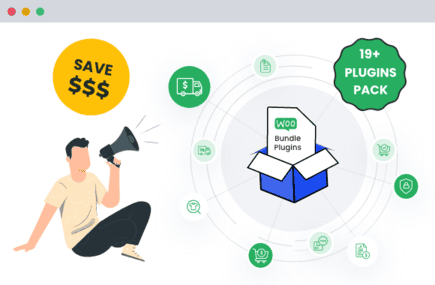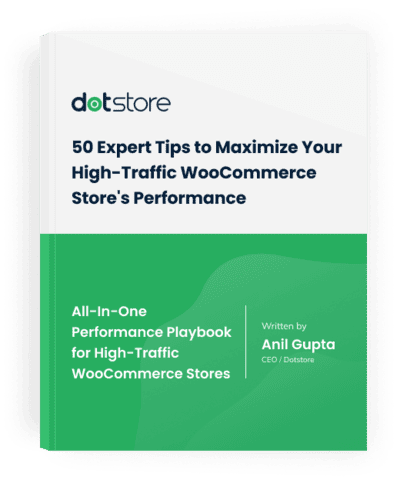Table of Contents
Shipping is a critical component of eCommerce, shaping customer satisfaction and retention. Efficient, transparent, and responsive shipping operations elevate the customer experience, transforming first-time buyers into loyal customers.
Efficient shipping meets the basic expectations of quick and reliable delivery and is pivotal in enhancing your brand’s reputation and reducing cart abandonment. By optimizing shipping processes, businesses can improve delivery speeds, reduce operational costs, and offer personal touches, such as the option for customers to add delivery notes. This personalized approach can make each package feel special and tailored to individual preferences, fostering customer loyalty and retention.
Setting Up Your WooCommerce Shipping Options
One of the first steps when setting up an online store using WooCommerce is configuring your shipping options. WooCommerce provides a variety of shipping methods that can be tailored to fit the needs of different businesses and customer bases. These methods include flat-rate, free, and local pickup, each catering to distinct scenarios and preferences.
Flat-rate shipping is famous for its simplicity and effectiveness. It allows you to set a fixed shipping cost, which can be applied universally or modified based on conditions such as shipping destination, cart total, or item weight.
Free shipping is a powerful incentive for customers and can be used strategically to increase order values and customer retention. WooCommerce allows you to offer free shipping either as a default option or conditional upon meeting specific criteria like a minimum purchase amount or selecting a particular delivery location.
Local pickup is another versatile option for businesses with physical stores or local warehouses. This method can enhance customer satisfaction by offering a convenient and immediate pickup alternative, saving shipping time and costs.
You must establish shipping zones and classes to manage these shipping methods effectively. Shipping zones are geographical areas where specific shipping methods and rates apply. WooCommerce allows you to define these zones by country, state, or zip code and tailor shipping policies to different regions. Shipping classes help categorize products based on similar shipping requirements, such as size, weight, or fragility, and apply specific rates. This is particularly useful for stores with a wide range of products, allowing for more accurate and fair shipping charges.
Leveraging Shipping Plugins and Extensions
WooCommerce shipping plugins and extensions are indispensable tools that simplify logistics and streamline various aspects of the shipping process. These plugins enhance WooCommerce’s core capabilities, enabling online stores to automate and manage shipping more efficiently. Essential shipping plugins integrate seamlessly with WooCommerce to provide advanced features like real-time shipping rates from carriers, automated tracking updates to customers, and more intuitive control over shipping options at checkout.
One of the primary benefits of using these plugins is their ability to assist with creating invoices and packing lists. This feature is crucial for maintaining a healthy order fulfillment process. By automatically generating detailed invoices and packing lists, these plugins ensure that all necessary shipping information is accurate and easily accessible. This speeds up the packaging process and minimizes errors, ensuring customers receive the correct products promptly.
Furthermore, some shipping plugins offer advanced customization options, such as adding delivery notes or choosing specific packaging per item, enhancing the customer’s unboxing experience. These plugins can also help inform customers about their order’s delivery date, a feature that significantly increases customer satisfaction by setting clear expectations.
Automating the Shipping Process
Automation is pivotal in streamlining shipping tasks within WooCommerce, transforming complex logistics into manageable, efficient processes. By automating routine tasks such as label printing and tracking updates, online stores can significantly reduce the time and effort spent on manual entries and oversight. This speeds up the shipping process and reduces the potential for human error, ensuring that orders are processed accurately and customers receive their purchases without unnecessary delays.
Email automation is a critical component of automating the shipping process. This technology is instrumental in keeping customers informed about the status of their deliveries. Automated emails can be set to notify customers at critical stages of the delivery process, such as when an order is shipped, out for delivery, or has been delivered. Such shipping notifications are crucial because they ensure constant communication and keep customers engaged and informed, which significantly enhances customer satisfaction.
Moreover, email automation can send personalized updates that include expected delivery dates or any delays that might occur, fostering transparency and trust between the customer and the store. By integrating these automated systems into your WooCommerce store, you can ensure a smooth, reliable shipping experience that keeps customers satisfied and likely to return.
Enhancing Customer Experience
Clear communication regarding shipping policies and costs is fundamental to enhancing the customer experience in eCommerce. Customers who understand what to expect regarding shipping timelines, fees, and procedures are more likely to feel satisfied with their overall shopping experience. Transparent information helps prevent surprises at checkout and reduces the likelihood of cart abandonment. Online retailers must detail these policies on their websites, ideally on frequently visited pages such as product pages, the homepage, and during checkout.
Including the expected delivery date for orders is another practice that significantly enhances service perception. When customers know when to expect their purchases, it helps manage their expectations and reduces uncertainty and potential frustration. Providing these details at the point of sale and in subsequent communications can help build trust and reinforce the store’s commitment to reliable service.
Additionally, personalizing the shipping experience can also make a significant difference. Allowing customers to add delivery notes during checkout gives them a sense of control and personal input. These notes can specify where to leave a package or contain other instructions that make the delivery process smoother and more tailored to individual needs. This level of personalization not only improves the delivery experience but enhances overall customer satisfaction, making them feel more valued and understood.
Analyzing and Optimizing Your Shipping Strategy
Utilizing analytics is critical to understanding shipping performance and aligning with customer preferences. By analyzing data on shipping times, customer location, and feedback, businesses can identify patterns and areas for improvement. Tools like Google Analytics, WooCommerce Reports, and specialized shipping analytics platforms provide deep insights into how shipping options affect sales and customer satisfaction. These tools can track everything from the most chosen shipping methods to the correlation between shipping speed and customer loyalty, helping businesses make informed decisions.
These insights allow businesses to continuously improve shipping efficiency and reduce costs. For example, if data shows that customers prefer a particular shipping option, businesses might negotiate better rates with those carriers or shift more resources to that method to increase efficiency. Similarly, analyzing return rates and reasons can help refine packaging methods or adjust shipping practices to reduce those costs and improve the customer experience.
Security Practices in Shipping
Maintaining security on shipment files is crucial for protecting sensitive customer information. Best practices in this area include regular audits of shipping and fulfillment processes, using secure platforms for storing shipping data, and ensuring that access to this information is restricted to authorized personnel only. Additionally, integrating robust cybersecurity measures, such as secure sockets layer (SSL) encryption, can safeguard data transmitted during shipping.
Secure payment gateways and data encryption cannot be overstated in the shipping process. These security measures protect customer payment information from interception or misuse. Using trusted payment gateways with solid security protocols helps prevent data breaches, enhance customer trust, and ensure compliance with regulatory requirements. Together, these security practices form an essential part of a robust shipping strategy, protecting the business and its customers from potential security threats.
Conclusion
Mastering WooCommerce shipping involves more than just setting up basic delivery options; it requires a comprehensive approach that enhances customer satisfaction, optimizes operational efficiency, and maintains high-security standards. By effectively setting up various shipping methods and leveraging powerful plugins and extensions, businesses can automate and streamline many aspects of their shipping process. This automation not only saves time but also reduces errors and enhances customer communication.
Analyzing shipping data plays a critical role in continuously improving the shipping strategy, allowing businesses to adapt to customer preferences and reduce costs. Furthermore, maintaining rigorous security practices is essential to protect sensitive customer information and build trust.
Incorporating these best practices into your WooCommerce shipping strategy can transform a routine logistical task into a dynamic asset that boosts customer loyalty and drives business growth. As eCommerce continues to evolve, staying ahead in shipping operations will undoubtedly be a key factor in achieving long-term success

